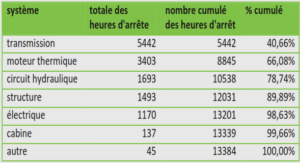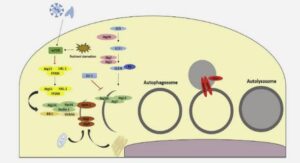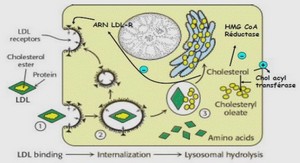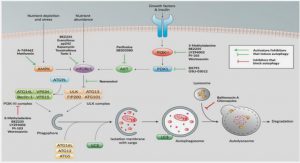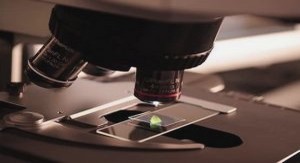Winterborn honeybees
Experiments were performed with honeybees (Apis mellifera) obtained from three colonies previously tested negative for CBPV, Acute bee paralysis virus (ABPV), Sacbrood virus (SBV) and DWV, located at the ANSES Sophia Antipolis laboratory winter apiary (Youssef et al., 2015), in February 2016 and March 2017 (Experiments 1 and 2, respectively). In 2016, colonies in the winter apiary were fed with 50% sucrose syrup prepared in our laboratory from pure sucrose (D(+)-sucrose, Acros Organics, Fisher Scientific, USA) and water, and protein paste, also prepared in our laboratory from candy sugar (Apifonda, Südzucker AG, Germany), fructose syrup (Fructoplus, Icko-Apiculture, France), Saccharomyces cerevisiae, and a commercial mix of supplemental S. cerevisiae, ascorbic acid, and various proteins and minerals (Apifeed, SINTAL, Italy). Both experiments were based on the same protocol in order to study the influence of thiamethoxam and CBPV co-exposure on bee survival, virus loads and physiology (Experiment 1), and on pesticide metabolisation (Experiment 2). Frames containing late-stage pupae were collected and placed in an incubator overnight at 34°C. Emerging bees were pooled to minimise colony-born bias and distributed into cages: 30 bees per cage of about 780 cm3 (Pain, 1966), with a capacity of 100 bees. Cages were maintained at 34°C in incubators with saturated humidity, and bees were fed ad libitum with one feeder containing 50% sucrose syrup, a second feeder containing 50% sucrose syrup supplemented with 1% protein (Provita’Bee, ATZ Diététics, France), and a third containing crystallised sugar paste. All feeders were available continuously for 9 days after emergence. Once the experiment began, feeders containing candy and syrup with protein were removed. Only the 50% sucrose syrup feeders, supplemented with thiamethoxam or not depending on the conditions, were provided to the honeybees.
Honeybee CBPV exposure
In order to reproduce natural transmission of CBPV, viral exposure was performed by contact between experimental honeybees and previously CBPV-inoculated honeybees. Five-day-old bees were inoculated with the CBPV strain A-79P (accession numbers: EU122229.1 and EU122230.1), according to the previously described protocol (Youssef et al., 2015). After 4 days of incubation, 5 to 9 CBPV-infected bees (depending on the difficulty of obtaining a high number of bees of the same age) were marked and used to propagate the virus to nineday-old honeybees (30 healthy honeybees per cage). A preliminary experiment had shown that both proportions of infected bees per cage had comparable effects on survival and viral transmission (p>0.05; data not shown). The injected bees (marked bees) died within the first three days, but were not removed, to continue propagating the virus.
Honeybee thiamethoxam exposure
To carry out pesticide exposure, a standard solution of thiamethoxam at 100 mg/L (prepared in water) was diluted in 50% sucrose as previously described (Coulon et al., n.d.), to obtain the final concentrations of 10 μg/L, 100 μg/L and 200 μg/L, corresponding to the expected daily doses of 0.25, 2.5 and 5.0 ng/bee, respectively. These doses were considered to be fieldrelevant, on the basis of the previously cited thiamethoxam concentrations found, and considering that it is very difficult to predict or measure a repeated amount of pesticide in nectar or pollen, due to the way in which biotic and abiotic factors act on the production of the flower (Aston and Bucknall, 2009).
Experiment 1: Influence of thiamethoxam and CBPV coexposure on bee survival, virus loads and physiology
After nine days of growth for emerging honeybees, feeders were removed and replaced by only one feeder containing either 50% sugar syrup or 50% sugar syrup supplemented with thiamethoxam, according to the following six conditions (eight cages per condition): i. Control bees (bees not exposed to CBPV nor to thiamethoxam); ii. Bees in contact with CBPV-infected bees (five CBPV-infected bees as inoculum per cage); iii. Bees fed with 10 µg/L thiamethoxam-contaminated syrup (about 0.25 ng/bee/day); iv. Bees fed with 200 µg/L thiamethoxam-contaminated syrup (about 5.0 ng/bee/day); v. Bees co-exposed to both CBPVinfected bees and 0.25 ng/bee/day of thiamethoxam; and vi. Bees co-exposed to both CBPVinfected bees and 5.0 ng/bee/day of thiamethoxam. Feeders were changed and weighed and survival was monitored daily (unmarked dead bees were removed from the cages). The volume consumed per bee was estimated taking into account the number of surviving honeybees per cage. At days 5 and 10 post-exposure, bees 127 from four cages per condition were sampled in liquid nitrogen and stored at -80°C for testing of gene transcription levels and viral load analysis.
Experiment 2: Influence of thiamethoxam and CBPV coexposure on pesticide metabolisation
Nine-day-old bees were exposed or co-exposed to CBPV and/or thiamethoxam in the same way as previously described but in the following conditions for Experiment 2: i. Control bees; ii. Bees in contact with CBPV-infected bees (nine CBPV-infected bees as inoculum per cage); iii. Bees fed 2.5 ng/bee/day of thiamethoxam; and iv. Bees co-exposed to both CBPV-infected bees and 2.5 ng/bee/day of thiamethoxam. Feeders were changed and weighed and survival was monitored daily. After 1, 5, 10, 12, 15, and 18 days post-exposure, bees from each condition were sacrificed to analyse pesticide residues over time: bees from one cage for Control and CBPV conditions, and bees from three cages for the 2.5 ng/bee/day of thiamethoxam and the 2.5 ng/bee/day of thiamethoxam/CBPV conditions. At day 18 postexposure, bees from three additional cages were sacrificed for each condition containing pesticide exposure. These bees were anesthetised using CO2 gas, and then dissected to remove their rectum, where the pesticide residues might accumulate (Coulon et al., n.d.). Samples were stored at -20°C until chemical analysis.
Quantification of thiamethoxam and clothianidin
Neonicotinoid residues in samples (one sample: 20 whole bees or 20 dissected bees) were quantified using liquid chromatography with electrospray tandem mass spectrometry (LCMS/MS), according to the protocol described by Martel et al. (Martel and Lair, 2011). Briefly, the pesticides were extracted using acetonitrile and liquid partitioning with n-hexane. One clean-up was then performed on a florisil cartridge (1 g, 6 mL) and the extract was analysed by LC-MS/MS.
Quantification of virus and gene expression levels
Eight bees were randomly selected from each experimental condition (sampling of two bees per cage) at day 10 after the beginning of the treatments. Viral RNA was extracted and CBPV loads were measured in each individual honeybee by quantitative PCR following the protocol described by Schurr et al. (Schurr et al., 2017). The viral loads were expressed in decimallogarithm (log10) of CBPV genome equivalent per bee (copies/bee). Eight additional honeybees were randomly selected from each experimental condition, and total RNA was isolated from each individual bee using TRIzol reagent (Invitrogen, USA) according to the manufacturer’s instructions. The concentration and purity of total RNA were assessed by spectrophotometry (Varioskan Flash Spectral Scanning Multimode Reader; Thermo Fisher Scientific, USA) before being adjusted to the final concentration of 500 ng/µL of RNA. The expression levels of immune genes (vitellogenin, dorsal-1-a, apidaecin, prophenoloxidase [ppo]) and detoxification genes (glutathione-S-transferase 3 [gst3], catalase and cyp6as14) were assessed using a StepOne Real-Time PCR System (Life Technologies, USA) based on a SYBR green detection method. The cycle threshold values of selected genes were normalised to the geometric mean of the housekeeping genes β-actin and RpL32. Relative gene transcription data were analysed using the 2ΔΔCt method. To verify that the amplification efficiencies of the target and reference genes (β-actin and RpL32) (Reim et al., 2015) were approximately equal, amplifications of five 10-fold dilutions of the total RNA sample (from 1,000 to 0.1 ng per reaction) were analysed in triplicate. The efficiency plot for Log input total RNA vs. ΔCt curve had a slope lower than ± 0.1.

